|
Tequila : Mexico's national spirit |
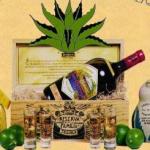 Mexican's national beverage is Tequila,which is descended from pulque, a favorite alchoholic drink of the Aztecs and other Indian tribes.
"Tequila : Mexico's national spirit " Mexican's national beverage is Tequila,which is descended from pulque, a favorite alchoholic drink of the Aztecs and other Indian tribes.
"Tequila : Mexico's national spirit "
|
Mexican's national beverage is Tequila,which is descended from pulque, a favorite alchoholic drink of the Aztecs and other Indian tribes.
Tequila is a liquor distilled from the fermented juice obtained from blue agave hearts .It has long bluish green spiky leaves with sharp points and a large heart,
where the juices are extracted and then distilled twice. Because of the unique taste and bouguet make Tequila become the famous liquor around the world .
|
|
To be a true "100% Agave Tequila" the beverage must be produced from a certain species and produced according to strict quality control and
manufacturing standards.
Tequila is grown in the Tequila Region , Jalisco state . This resulted in the name of the town being increasingly used as the name for the spirit.
Around 1870 there were a dozen Tequila distilleries in Mexico.
However, most people always confuse between tequila and mezcal. We can solve this problem by compare with Cognac.
Just as Cognac is a special type of brandy produced from specific grapes grown in a select region of France not all brandy has the distinction
of being Cognac. In like manner, all liquors distilled from any agave plant are "mezcal", but only those made from the blue agave are branded as
Tequila, all the others are mezcal. The most famous mezcal is distilled from a variety of agave grown in the state of Oaxaca in southern Mexico,
and the finest comes from the wild agave known as "papalom้" that it is so potent . “Only two shots can really knock you down!"
| | 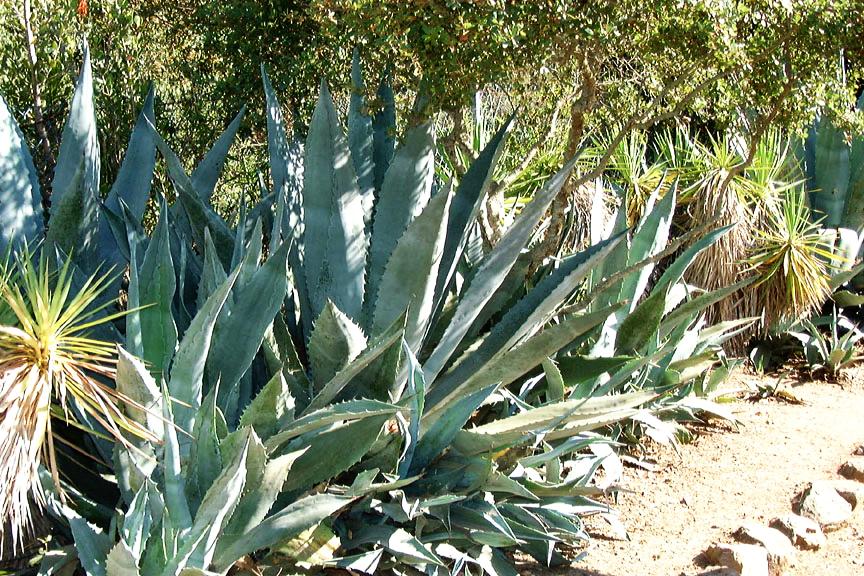 | |
|
Tequila worm is sometimes found in bottles of mezcal. This larva lives in agave and in certain regions of Mexico.People may add the worm to
the bottle .Except the fine bottles of "100% Agave Tequila" never have a worm added.
The process of tequila begins with the farming of the blue agave. This large, greenish-blue, spiny, long-leafed plant is left to grow
until it reaches about 10 years of age. When it is mature leaves are chopped away from its core by a "jimador" who assesses the plants ripeness.
If the plant is harvested too soon, there won't be enough sugars to do the job. After that these are then baked and crushed to extract a sugary
liquid. Through fermentation and distilling, the white tequila liquor is produced. Then ,it is bottled and drunk.
|
| 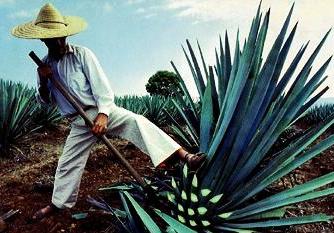 | |
|
Tequila is graded according to the level of agave it contains and the length of aging.
There are two levels, either 100% agave, or mixed (mixto).
The highest quality tequila is made from fermenting and then distilling only agave juice mixed with water.
Mixto is made by fermenting and then distilling a mix of agave with other sugars, usually cane sugar.
By Mexican law, all 100% agave or aged tequila must be bottled in Mexico. If a tequila is 100% it will say so on the bottle.
(Until the 1930's, all tequila was 100% blue agave.)
|
| 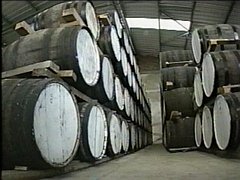 | |
|
In addition , there are four types of tequila:
Blanco (or silver)
It is the original style,which is clear with little or no aging. Blanco is usually bottled immediately after distillation.
It can be 100% agave that is used primarily for mixing.
Gold tequila
It is unaged blanco tequila, that has been colored or flavored with additives.
The gold color does not come from aging, it comes typically from added caramel.
Reposado (rested) tequila
This tequila is aged in wooden casks for at least 2 months, and not over 11.
Aejo (old) tequila
Aejo is aged in wooden barrels (usually bourbon barrels) for a legal minimum of one year. Best quality aejos are 18 months to 3 years for mixtos, and up to 4 years for 100% agaves.
It is generally agreed that tequilas aged over 4 or 5 years lose their sweet agave character, and begin to take on the characteristics of whisky.
|
| 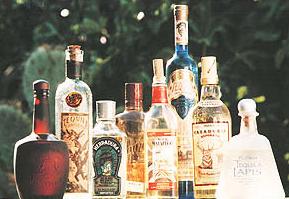 | |
|
Tequila is a fine and complex liquor .It must be sipped slowly.Tequila is best drunk in a "caballito" (Spanish for a little horse) - a cylindrical,
tall but small round glass - Usually big enough to hold a couple of fluid ounces. It is drunk as an aperitif, and is a fine prelude to a hearty
Mexican meal - A pit barbeque fiesta, or a dinner of Northern style goat kid, for example. It should be served at room temperature ,
to enjoy their characteristic flavour. Others prefer it frozen: When served it is slightly syrupy, smooth on the tounge - and may help cool you down.
However, the traditional “Caballito” still is the favorite glass to enjoy Tequila Blanco and Reposado. A๑ejo is preferably served in a snifter so that
its aroma is fully appreciated. Blanco and Reposado may be accompanied by "sangrita" made of tomato and orange juice with salt and chile.
|
| 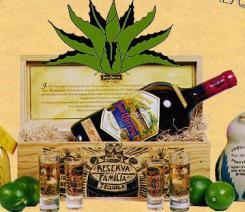 | |
|
The tequila shot with salt on one hand and a bite of lime is Hollywood stuff and few people drink it that way, mostly tourists.
However, some people do put some lime juice in the tequila or bite the lime before sipping it. In many restaurants throughout Mexico they bring you a small
tray with your favorite brand, a caballito with sangrita, salt and half a lime.
It is a sound practice to order the waiter to bring the tequila bottle to your table and have it poured in front of you. Some places do not keep a fair stock of
brands, but they might say they do and serve you something different than what you ordered.
|
| 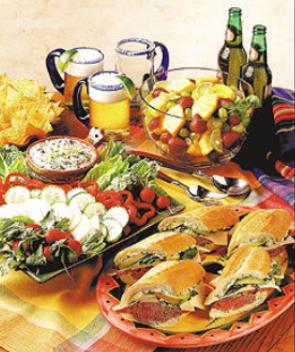 | |
Nam Khing
| Source: | http://en.wikipedia.org |
| www.itequila.org |
| www.loscabosguide.com |
|